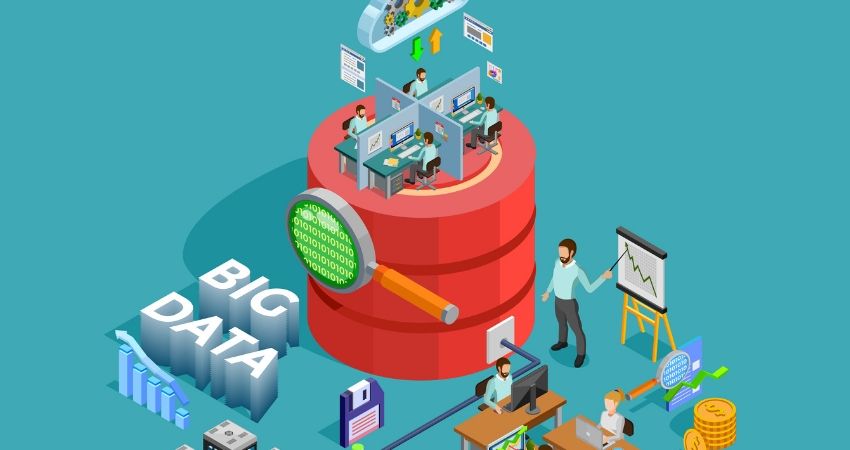Most internet users are now aware of the dangers to their personal information. When it was revealed that tech companies were misusing and manipulating our personal information, there was a widespread “techlash” against the corporate behemoths Facebook, Amazon, and Google.
The explicit goal of data collection is to predict consumer wants and needs. Academics and activists have spent years exposing the perils of big data practices on individual privacy and civil liberties.
Researchers have also demonstrated how biased big data and opaque AI have reproduced racism, classism, and other forms of inequity.
However, agriculture companies such as Monsanto and John Deere have received less attention. Nonetheless, they are among the largest, most concentrated corporations in North America, with profits increasingly centered on the collection, processing, and sale of big data.
We need to pay close attention. Agricultural big data is likely to have far-reaching negative environmental and social consequences.
Profit maximization: Using the past as a guide
Farmers have been using satellite weather data for decades, but big data practices today are different. Sensors built into farm machinery, known as “precision” farm equipment, collect data. The data is then aggregated and mined for insights by corporate data scientists.
While there are advantages for farmers who purchase data-driven insights, there are clear and potentially incomparable advantages for corporations. Both data-driven insights and datasets are sources of profit for private companies.
We can deduce what agribusinesses might do with big data based on insights from other industries, as well as how agribusinesses have acted in the past.
Firms collecting weather and pest pressure data from farms will most likely be able to predict which products are most needed where and then use this information to maximize profit.
Companies that supply seeds and chemicals to farmers have used price discrimination for years, selectively raising prices for inputs within demographics or regions that are seen to rely on them.
Big agricultural data has the potential to cement large agribusinesses’ market advantage.
Agricultural big data
Companies that collect and control the most data are likely to gain the most power. This is due to artificial intelligence’s scale-driven proposition: AI is only as good as the data that feeds it.
This advantage has been demonstrated by Google and Amazon, who were the first to collect internet data. Their leadership has facilitated the development of robust AI systems such as Google Search and Alexa.
The fact that the powerful can become even more powerful in the big data era is relevant for agriculture, which has long been dominated by a small number of companies.
A marriage from hell
In 2018, the two largest agribusinesses, Monsanto and Bayer, merged in a $63 billion deal. Monsanto owned more than 80% of all genetically modified seeds in the world at the time. Because of its anti-competition implications, the merger was described as a marriage from hell.
The relevant part of the story for big data is that the new Bayer has access to data from nearly half of all farmers in North America.
The inner workings of Bayer’s AI system are impossible to assess because trade secrecy law protects them from scrutiny, making it a “pernicious black box.”
As with Facebook, Google, and Amazon, neither the firms’ datasets nor the AI processes used to convert data into advice are open to the public. Corporations justify strict data control as a means of protecting consumers from privacy breaches and malicious hacking.
However, agricultural big data, like social media companies, lack democratic institutional oversight. So far, most data breaches have been discovered through the efforts of watchdogs. Misuses of agricultural data will almost certainly be resolved in the court of public opinion, as they have been for internet data.
Data sets with bias
Even if one does not have access to commercial code or data sets, one can analyze what is happening at the surface of agricultural big data, which media studies scholar Ian Bogost refers to as “procedural rhetoric.”
Many people believe that big data and artificial intelligence (AI) are efficient, objective, valuable, and all-powerful. People define and make relevant the range and content of big data and AI categories, in contrast to the fallacious view that data are “raw” and “drive” advice (a fallacy I call the Immaculate Conception of Data). Algorithms and datasets are created by computer scientists and engineers.
For example, the dominant commercial agricultural AI is designed by company scientists to include data only on a small selection of major agronomic commodity crops grown on large farms.
This design bias toward large, commodity crops and capital-intensive farms has large-scale implications, such that our food system may increasingly be characterized by an industrial mode of agriculture.
Big data is not the answer to the food crisis.
Many academics believe that data-driven readings of the world are the primary way to solve food system problems.
Indeed, the United Nations organization Global Open Data for Agriculture and Nutrition and others advocate for the release of agricultural data, as if data access were synonymous with broader social and environmental justice.
Industrial agriculture has been shown to have negative effects, including global climate change. There is growing agreement that we need to diversify our food system at all levels in order to foster a sustainable agricultural transition.
Beyond data access and infrastructure, digital democracy necessitates a fundamental shift in decision-making power from a small group of corporate stakeholders to a larger group of citizens who can help in answering these questions: What type of food system do we need? Which farming techniques and technologies will aid us in this endeavor?




